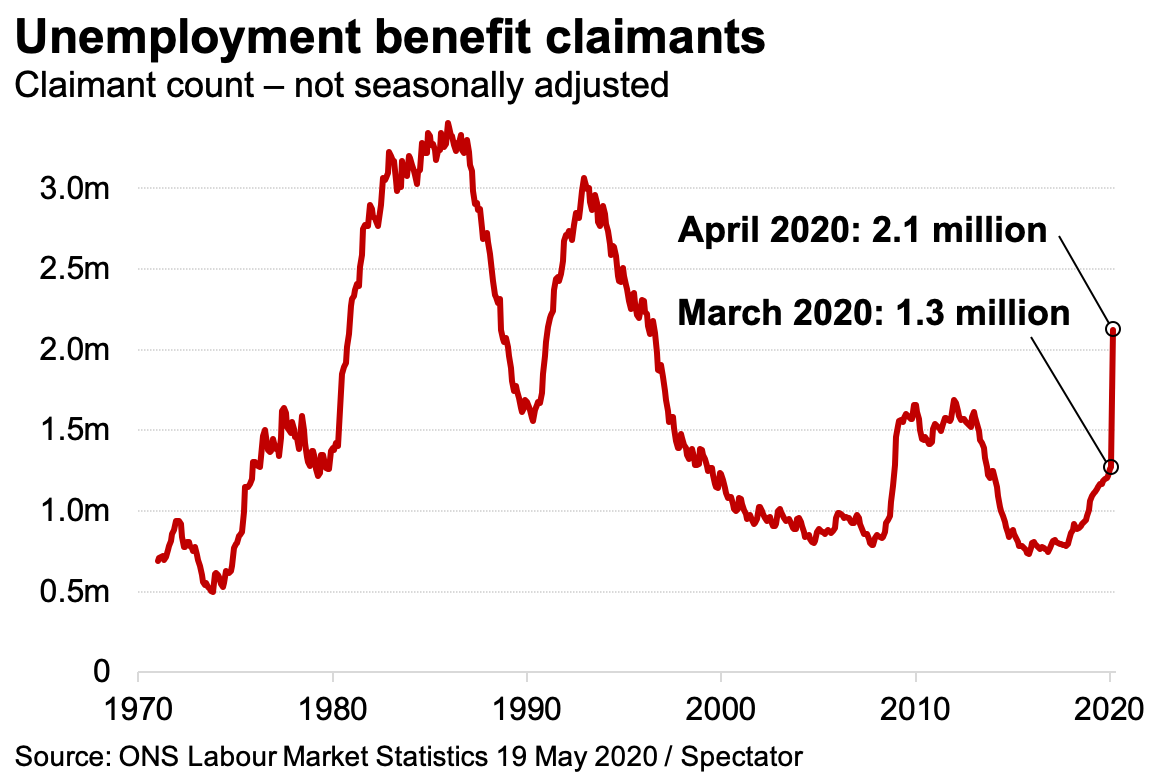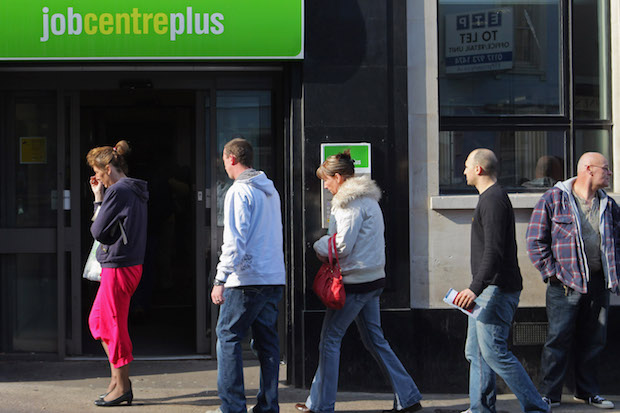The number of people claiming unemployment benefits in Britain rose by over 856,000 to 2.1 million in April, the first full month of the lockdown. Figures from the Office for National Statistics reveal that the number claiming benefits due to unemployment has increased by nearly 70 per cent. This marks an unbelievable u-turn from the start of the year, when UK employment figures were hovering at record highs.

These figures do not include ‘the furlough effect’: those who are still counted as employed, paid by the Government to stay home and wait for the green light to return to work. Today’s numbers, as bad as they are, don’t reflect the number of jobs that will ultimately be lost to the lockdown: for some, a furlough status means a return to work soon; for others, it’s delayed joblessness.
How many of these jobs will come back? And how quickly? One answer has been provided by the university of Chicago: more than 40 per cent of the jobs lost during Covid-19 aren’t coming back. No similar study has been carried out in the UK yet. But even the most optimistic scenarios for economic recovery don’t forecast the jobs market to rebound as quickly as GDP. A post-Covid economy will create new kinds of demand, and in response, new kinds of jobs. But it will require confidence on the part of employers and entrepreneurs to stimulate the jobs market again.

It’s not just today’s figures that are cause for alarm; the support packages are looking increasingly unsustainable. Between the furlough scheme and the new self-employed support scheme, one in three private sector workers now has their income paid for by the Government. The number of adults who receive meaningful funding support from the state is now over 50 per cent. So far, the British public has been extremely cautious, compared to European counterparts, to return to work and get the economy moving again. The furloughing scheme – which, no doubt, has saved jobs in the short and long term – will also be providing incentive for employers and workers to keep businesses shut for a while longer. But these attitudes may shift as we go into the summer, when the scheme is expected to be supported (in part) by employers, and very difficult decisions about staff retention are made.







Comments